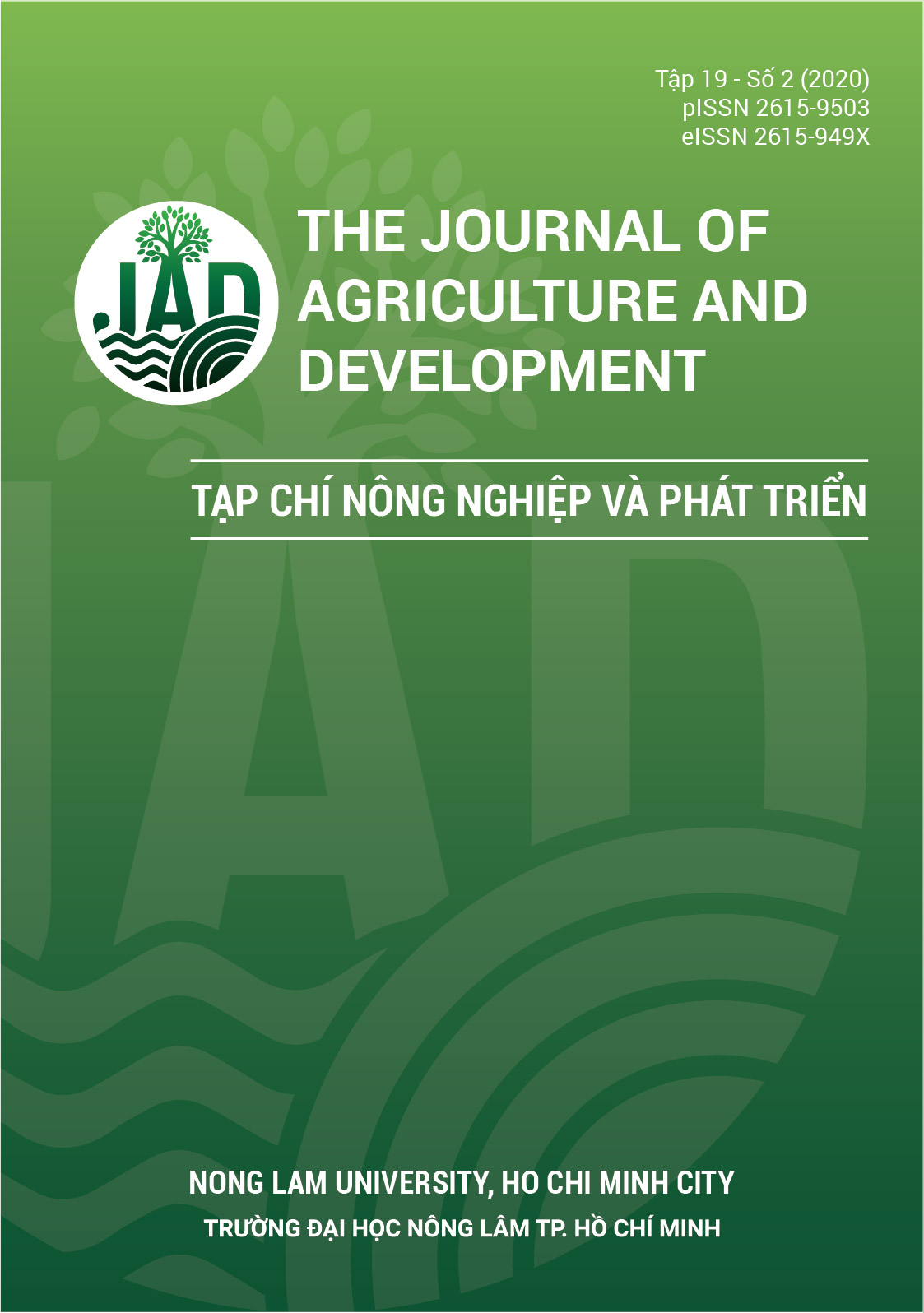Correlation between nematode and soil properties on some pepper-cultivated areas in Gia Lai province
Main Article Content
Abstract
The research aimed to understand the soil structure for pepper agriculture, the relationship between nematodes distribution and some soil quality parameters. Secondary data collection, field survey, and soil sampling and analysis were conducted in field and in laboratory. The results showed that the soil had pH values ranging from acid to neutral, average N and P levels, and high organic matter content. The isolation of nematodes showed that there were 26 genera of nematodes belonging to 17 families and 7 orders in soil. The lower the soil organic matter content and pH value were, the higher the density of nematodes was, indicating the possibility of survival and development of nematodes in extreme soil environment. This is one of significant factors that may impact the pepper produc-tivity. Therefore, increasing nutrient contents of soil would prevent nematode activities and at the same time enhance the resistance of pepper to nematodes.
Article Details
References
Arantzazu, U., Hernandez, A., & Pastor, J. (2000). Biotic indices based on soil nematode communities for assessing soil quality in terrestrial ecosystem. The Science of Total Environment 247(2-3), 253-261. https://doi.org/10.1016/S0048-9697(99)00494-5
Bongers, T., & Bongers, M. (1998). Changes in soil free- living nematode communities and their trophic composition along a climatic gradient. Applied Soil Ecology 10, 239-251.
Bui, C. T., & Le, D. D. (2013). Pepper, diseases and control measures. Ho Chi Minh, Vietnam: Agricultural Publishing House.
Duong, D. H., Bui, T. T., Tran, T. D., Nguyen, T. M., & Ngo, T. X. (2012). Initial research on using nematodes to assess soil quality for pepper tree plantation at Loc Hung commune, Loc Ninh district, Binh Phuoc province. Journal of Science and Development 6, 654- 660.
Ferris, H., Griffiths, B. S., Porazinska, D. L., Powers, T. O., Wang, K. H., & Tenufa, M. (2012). Reflections on plant and soil nematode ecology: past, present and future. The Journal of Nematology 44(2), 115-126.
Le, D. K., Le, Q. K., & Tran, T. T. (2013). Impact of nematodes on pepper, coffee and scientific and technological solutions in disease prevention. Journal of Plant Protection 6, 25-31.
Le, Q. T., Nguyen, T. B., & Duong, D. H. (2014). Study on using nematodes to assess soil quality of pepper cultivation area in Binh Phuoc province. Journal of Agricultural Science and Technology 2, 60-67.
Nguyen, N. S., Ho, M. L., Nguyen, H. H., & Le, Q. T. (2016). Current pepper cultivation practice and soil quality assessment for Chu Prong district, Gia Lai province. Journal of Agricultural Science and Technology 4,18-25.
Sarathchandra, S., Ghani, A., Yeates, G., Burch, G., & Cox, N. (2001). Effect of nitrogen and phosphate fertilizers on microbial and nematode diversity in pasture soils. Soil Biology and Biochemistry 33(7-8), 953-964. https://doi.org/10.1016/S0038-0717(00)00245-5
Sarma, Y. R., & Saju, K. (2004). Biological control for the management of foot rot and slow decline diseases of black pepper. Journal of the Pepper Industry 1, 25-51.








